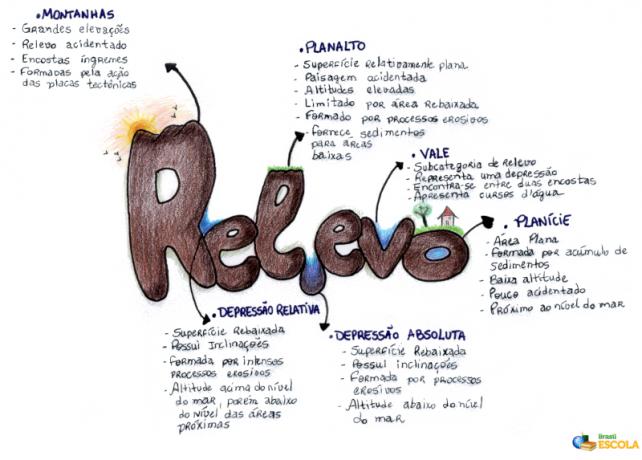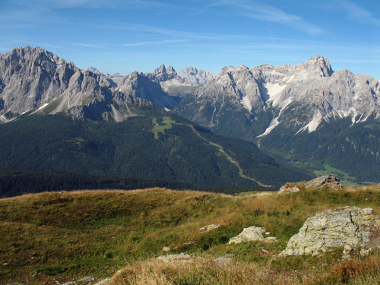O relief corresponds to the variations that appear on the Earth's surface layer. Thus, we can note that the land relief has different physiognomies, that is, areas with different features: some taller, some lower, some more rugged, some flatter, among others features.
To better analyze and understand the way in which these dynamics reveal themselves, a classification of the terrestrial relief based on its main characteristics, dividing it into four different forms of relief: the mountains, you plateaus, at plains and the depressions.
Mind Map: Relief

*To download the mind map in PDF, Click here!
mountains

The Alps in Europe form a mountain range
Mountains are relief forms that are characterized by their high altitude compared to other altitudes on the earth's surface. When taken together, they form chains called mountain ranges, like the Andes, in South America, and the Himalayas, in Asia.
There are four types of mountains: the volcanic, which form from volcanoes; of the erosion, which arise from the erosion of the relief around them, taking millions of years to form; at
missed, originated from faults in the crust, which generate a rupture between two terrestrial blocks, standing one above the other; and the folded, which originate from land folding caused by tectonism. Of all these types, the last is the most common.plateaus

Tibetan Plateau image
Plateaus - also called plateaus - are defined as more or less flat areas that present averages altitudes, very sharp boundaries, usually composed of cliffs, and are surrounded by lower regions. In them, the erosion process predominates, which provides sediment to other areas.
Do not stop now... There's more after the advertising ;)
There are three main types of plateaus: the crystalline, formed by crystalline rocks (intrusive and metamorphic igneous) and composed of mountain remains that have eroded over time; you basalts, formed by extrusive igneous (or volcanic) rocks originated from ancient and extinct volcanic activities; and the sedimentary, formed by sedimentary rocks that were previously low and that were uplifted by the internal movements of the earth's crust.
plains

The Amazon River is surrounded by a plain area.
They are flat areas with low altitudes, usually very close to sea level. They are mostly found close to plateaus, forming some river valleys or constituting coastal areas. They are characterized by the predominance of the accumulation and sedimentation process, since they receive most of the sediments from the wear of other types of relief.
Depression

Dead sea, example of absolute depression
These are lowered areas that have the lowest altitudes on the Earth's surface. When a location is lower than its surroundings, we talk about relative depression, and when it is below sea level, we have the absolute depression. The Dead Sea, in the Middle East, is the largest absolute depression in the world, that is, it is the continental area that has the lowest altitudes, with about 396 meters below sea level.
By Rodolfo Alves Pena
Graduated in Geography
*Mental Map by Rafaela Sousa
Graduated in Geography


